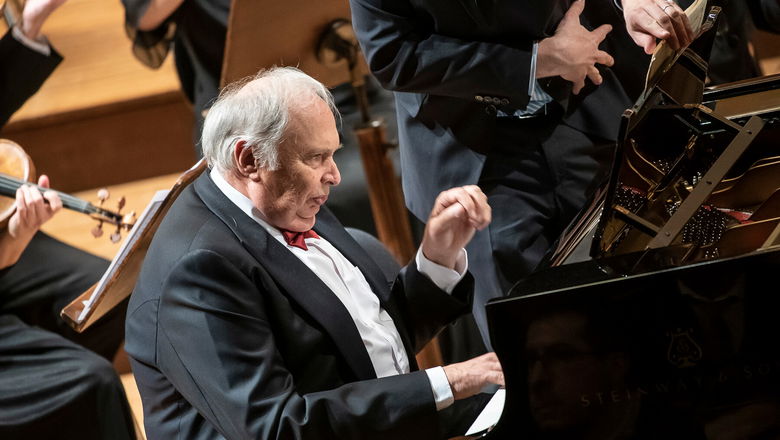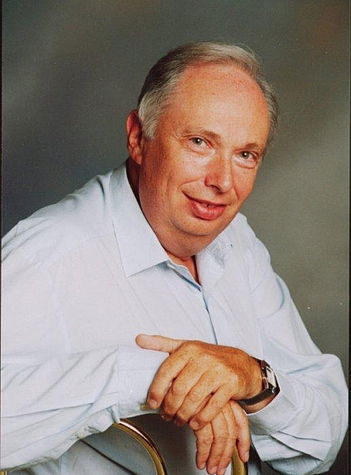Fantasia—that is the leitmotif for this evening. Our performer was able to choose from among an endless series of works that bear that title or are based on its principles. And the principles of the fantasia are freedom in giving music its shape, improvisation, and the abandoning of strict rules. The composer relies on the power of inspiration.
Today’s oldest composition did not necessarily have to be the Chromatic Fantasy and Fugue by Johann Sebastian Bach (1685–1750). We already find fantasias in the 16th century. Usually, they are written for keyboard instruments and combine all of the principles of improvisation mentioned above. In view of their strict, almost mathematical rules, fugues reflect a completely different principle.
Bach was not the first person to compose a “chromatic fantasy”. The descending chromatic tetrachord is the theme of the Fantasia Cromatica by the “Orpheus of Amsterdam, the organist and composer Jan Pieterszoon Sweelinck. Thanks to his many pupils, his music won widespread fame, and it is known that the north-German school of organists had a great influence on Bach. In Bach’s Chromatic Fantasy and Fugue, both meanings of the word fantasy are brought together: the Fantasy is the prelude to a fugue. Here Bach pays no heed to anything. Led by his feeling for improvisation, he passes with playful freedom from one key to another. About halfway through, a recitative appears unexpectedly—a kind of narration reserved for the human voice. The ending of the Fantasy is very powerful: above a pedal point on the note D, a sequence of chords descends, semitone by semitone, until the comforting conclusion in D major.
There follows a beautifully paced three-voice fugue with a chromatic theme. Some episodes in the otherwise strictly structured score sound almost romantic, and it is no wonder that they thrilled listeners in the 19th century, when the work was performed by Felix Mendelssohn-Bartholdy, a great promoter of Bach’s music.
Performances on a modern piano can get carried away by the possibilities for using the pedal to highlight the work’s “romantic” mood. In the past, such interpretations were offered by pianists like Edwin Fischer or more recently Alfred Brendel. One can, however, choose the opposite approach of not using the pedal, as demonstrated by Glenn Gould or András Schiff.
The image of a composer all alone, improvising on the harpsichord quite freely and without self-censorship and indulging in all kinds of musical experiments, comes persistently to mind not only in the case of Bach’s composition. The two fantasias by Wolfgang Amadeus Mozart (1756–1791) are also a kind of “snapshot”, rare documentation of a musical genius who amazed listeners with his improvisations.
The Fantasia in D minor, completed and published after Mozart’s death, is in the key of his opera Don Giovanni and of his Requiem. The piece is not long, but the music is of great depth and drama. Mozart uses repeated notes, silence, chromatic passages, and quick shifts of mood to build tension. The second part is in the major mode, contrasting with the first part like light after darkness.
Mozart published his Fantasia in C minor together with his sonata in the same key. The remarkable torrent of music passes freely from one key to another, more reminiscent of opera than of anything else. Here, the piano serves as the orchestra one moment and as the singer the next.
The German composer Robert Schumann (1810–1856) stands slightly apart from the other composers represented by today’s selections. Schumann’s boundless imagination took nourishment from many sources. Here, it is not the piano itself that has awakened the composer’s fantasies, but a work of art in a different genre: a collection of stories titled Fantasy Pieces in Callot’s Manner by one of his favourite writers, E. T. A. Hoffmann, an author and musician who wrote horror stories and humorous tales. Here, Schumann lets his two “guides” take turns speaking. These two different aspects of his personality also appear as characters in his essays: the passionate eccentric Florestan and the dreamer Eusebius. The inventive, complicated piano writing reveals Schumann’s original but unfulfilled ambition of becoming a piano virtuoso. When Eusebius is doing the talking, however, we find ourselves in the realm of pure musical poetry.
Ludwig van Beethoven (1770–1827) designated each of the two sonatas of his Op 27 as “quasi una fantasia.” He wrote them shortly after the beginning of the 19th century. The first of the pair is actually the more fantastical or experimental, but the second, which is on this evening’s programme, is more popular. It is hard to say why it is so beloved—it might be thanks to the romantic-sounding nickname Moonlight, which did not originate with the composer but aptly describes the mood of the first movement, a prelude with arpeggios in the right hand accompanying a walking bass line. All of this takes place in a dreamlike atmosphere, and the dynamic level never rises above piano. A minuet and trio then gently set the stage for the tempest that erupts in the third movement. Devilishly rapid sequences of arpeggios race across the entire keyboard. What emerges here is Beethoven the virtuoso pianist, whose playing amazed the Viennese public until deafness forced him to give up performing in concerts.
Frédéric Chopin’s (1810–1849) Fantaisie in F minor, Op. 49 is one of his lengthiest works and is sometimes called his “Fifth Ballade”. Although the works of the Polish-French Romantic composer often make the impression of spontaneous improvisation, their structure is by no means chaotic. In the Fantaisie in F minor we hear extensive elegiac and passionate passages, cantabile melodies, marches of an absolutely different character, and lamentations, but we also detect hints of sonata form, and a detailed examination of the score reveals a carefully planned harmonic structure. Yes, Chopin often immersed himself in hour-long “seances” improvising alone at the piano, searching for, and finding new colours and harmonies, but when writing his music down, he often faced a challenge giving a final, meaningful shape to the overabundance of his brilliant ideas.
What is so attractive about fantasias from the Renaissance until the present is that the music leaves an enormous amount of room for interpretation. Nowhere else is it so clearly shown that playing the piano is unquestionably an act of creation.



